The apotheosis of the shamash and the restoration of his office and honor camouflage a similar uncertainty. Beset by endless questions about the afterlife, most of them maddeningly trivial, the shamash has to decide how much of what he discovered about Gehinnom he is willing to give up to these inquisitive and intrusive townspeople. Although he would much prefer to abide by the ethos of discretion and restraint, he knows that without disclosing secrets he has no chance of stoking the will to repent. He has, after all and for ostensibly higher ends, broken his decades-long silence and told the shocking tale of the descent into the Netherworld. The last glimpse the narrator gives us of the shamash finds him meditating on the mysteries of divine indirection that have brought him and his tale to the center of attention, and this even though he was merely a candle holder to the rabbi in his audacious mission to release an agunah from her bonds.
The shamash is well aware that it is the sensational revelations about the afterlife that have been the engine for the town’s new moral resolve. The townspeople of Buczacz have been riveted by his story because all human beings are fascinated by suffering, sin and punishment, the stranger and more grotesque the better. There is no denying that it is the perverse pleasure people derive from such tales that makes them willing to attend to the moral message. But that kind of pleasure is only a provocative stimulant; it does not provide the inner resources for sustained change. “Such pleasure has been the downfall of many,” the shamash observes and then goes on to posit, “But there are many kinds of pleasure, and happy is the one whose pleasure brings him edification and whose edification is his pleasure” (62). In the shamash’s wistful sigh, we can hear the prayerful wish of many writers who would hope their readers derive as much aesthetic gratification from the nuanced description of the everyday lives of their characters seeking to reform their lives as from the melodramatic events that precipitated the desire to change. This sentiment would not be out of place, for example, in the mouth of George Eliot’s narrator in Middlemarch as she describes the long night of Dorothea Brooke’s moral reckoning with herself and its prosaic aftermath. It is the particular burden Agnon takes on himself in ‘Ir umelo’ah as he seeks to make the life of a holy community interesting and important to us, even if in the process he supplies us with no small stock of the shocking and the deviant.
INSCRIPTION, CATASTROPHE, RETELLING
On the last page of Hamashal vehanimshal we discover that the story we have been reading is the work of a writer living in modern-day Jerusalem, a city filled with its own share of noisy synagogues. This is a disorienting discovery. Although we “know” that we have been reading a text by S. Y. Agnon, a twentieth-century Hebrew writer, the story all along has been told by a narrator close to the events in the seventeenth century, who, in turn, hands over most of the narration to an eyewitness; it is a world in which we have been fully immersed. What is the relationship between the narrator, in whose grip we have been held throughout this remarkable tale, and the writer, who pokes his head up at the very conclusion? Is the former merely a creation or a device of the latter? Our disorientation is compounded when we are informed that the story we have read is not the original story but rather a replacement for the original story that was inscribed in the pinqas of Buczacz and lost in the Holocaust. What is the relationship between the original and its replacement?
Most of what we know about the lost text revolves around the office of the scribe and his role in formulating the account of the shamash’s story that is inscribed in the communal register. The narrator is unstinting in his praise for the scribe’s work. “So the scribe wrote out the whole story in words true and wise, in the way words were used in Buczacz at the time when Buczacz was Buczacz. Some of the words were from the Torah, some from the sages, all of them had an eloquence that gives tongue to knowledge” (66). The scribe takes the events of the shamash’s tale as his raw material and submits them to a process of sublimation whereby they are recast into a more exalted style that draws directly from the language of sacred texts. The calligraphy itself is the result of the scribe’s unrelenting drive to perfection, with “each letter distinct unto itself and each one in its place on the line, like people standing for the silent devotion.” The elders of Buczacz proceed to show the scribe’s handiwork to the wise men of the day throughout Poland, who pronounce its style and grammar above reproach.
We can only imagine what that text was like, yet, having read the story before us, we can have a strong presumption about what it does not contain. In the effort to fashion an exemplary tale that foregrounds its religious message, the lost text likely eliminated most of the elements that makes the story fascinating to us as modern readers: the digressions and obiter dicta of the shamash’s narrative through which the personal and collective anxieties of the times find their unofficial expression. Eliminated too would have been many (unsolved!) mysteries large and small: How could Zlateh’s get (ritual divorce) have been given by Aaron if his death was confirmed by the visit to Gehinnom? How do the rabbi and shamash emerge from Gehinnom unscathed? Why does the shamash wait fifty-four years to tell his story? How did he come to marry Zlateh? Now, with all due respect to the perfection of the scribe’s text and with all due respect to the destruction of the holy community of Buczacz, few of us would wish to have that text restored if it meant giving up the story we have just read. As the shamash himself wisely said, there is pleasure and there is pleasure. To subsist on the pleasure of edification alone, even combined with exquisite calligraphy, is an option many of us would forgo.
Nonetheless, our knowledge of Buczacz, our understanding of the time when “Buczacz was Buczacz,” is not diminished by our having acquired it through our reading a story written by a modern author. To make the ironic point sharper, it is only through this modern act of imaginative writing that we can make a connection to the world of Buczacz. It is through the fountain pen that coyly beckons to the author on the story’s last page that the town comes alive, rather than through the quill and ink pot of the scribe. But if the means of inscription are different, Agnon gamely insists on an essential continuity, if not identity, between these two offices, both of which are represented by the word sofer . When the Hebrew language was modernized in the nineteenth century and an equivalent was sought for the new vocation of “writer,” it was decided to stick with sofer rather than invent a new term. It would be left to context alone to determine if a particular use of the word indicated the God-fearing artisan who meticulously calligraphed Torah scrolls, tefillin and mezuzot or whether it indicated the modern author of novels, short stories and feuilletons. For Agnon, the confusion fitted perfectly.
1648 AND THE HOLOCAUST
By leaving mention of the Holocaust to the last page of his story, Agnon exercised a canny circumspection. He did not want the trauma of 1648 to be backlit by the later catastrophe, or reduced to being a foreshadowing. This of course does not prevent us (belated readers of the story, saturated with Holocaust consciousness) from doing so. But the experience of reading the story should, I think, urge upon us restraint. If anything, Agnon wants us to work the relationship between the two events in reverse. We should take the horrific knowledge imprinted on us from the events of the twentieth century and use it in the service of understanding a calamity in the distant and unfamiliar seventeenth century.
Читать дальше
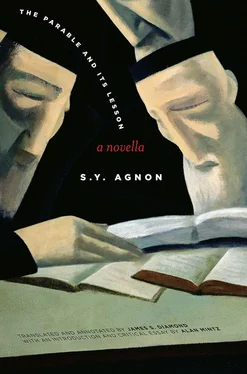

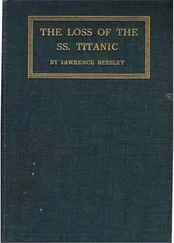
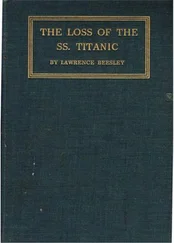


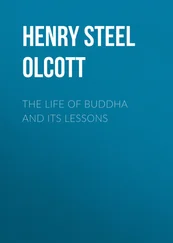
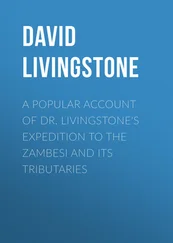
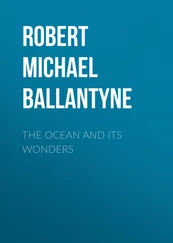

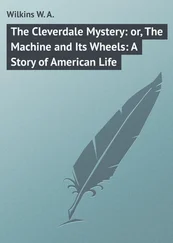

![Edward Ellis - Adrift on the Pacific - A Boys [sic] Story of the Sea and its Perils](/books/753342/edward-ellis-adrift-on-the-pacific-a-boys-sic-s-thumb.webp)